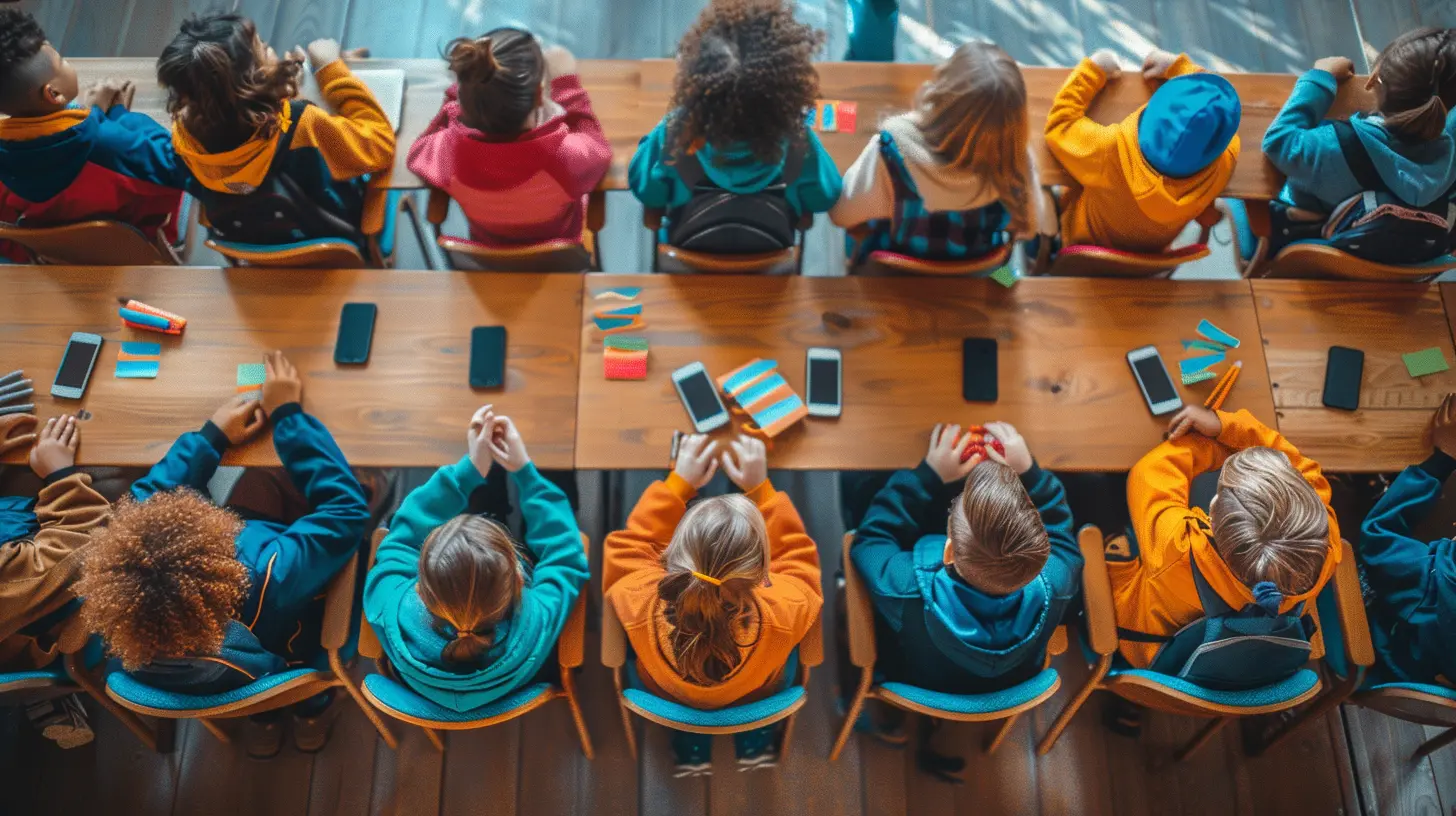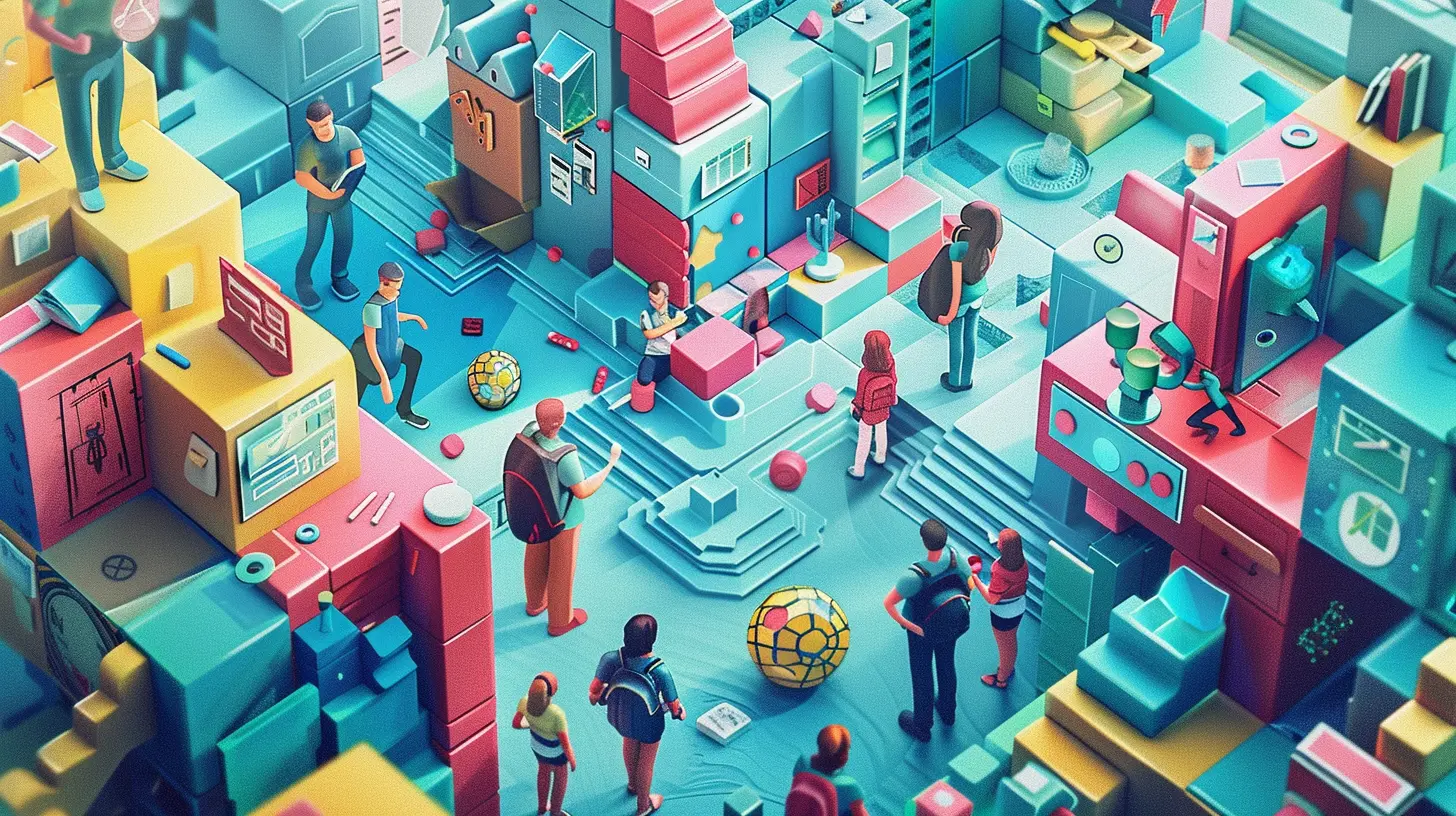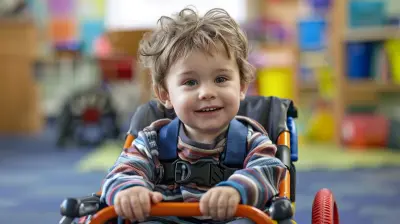Gamifying the Classroom to Enhance Problem Solving Skills
14 May 2025
Let’s be honest—traditional learning methods can sometimes feel like watching paint dry. Lectures, endless worksheets, and monotone explanations can make students tune out faster than a bad reality TV show. But what if I told you there's a secret ingredient that can transform the classroom into an exciting, problem-solving playground? Enter gamification—the game-changer (pun intended) in modern education.
Gamifying the classroom isn’t just about playing games—it’s about applying game mechanics to learning, turning mundane assignments into engaging challenges that spark critical thinking and problem-solving skills. It’s about leveling up the learning experience—literally!
So, how does gamification actually enhance problem-solving skills? Let’s dive in. 
🎮 What is Gamification in Education?
Before we get too deep, let's clarify what gamification really means.Gamification is the use of game elements like points, badges, leaderboards, and challenges in non-game settings. In education, this means integrating these mechanics into lessons to motivate students, improve engagement, and yes, boost problem-solving abilities.
Think about it—students who are engaged in a game naturally develop problem-solving skills without even realizing it. They troubleshoot, strategize, and experiment in real-time, which is exactly what educators want them to do in the classroom.
Now imagine this: Instead of simply asking students to solve a math problem, what if they had to solve it to escape a virtual dungeon? Doesn't that sound way more exciting? 
🎯 How Gamification Boosts Problem-Solving Skills
Let's break down the magic behind why gamification is a powerhouse for developing problem-solving skills.1. Encourages Critical Thinking
Games often require players to analyze situations, make decisions, and predict outcomes—all key components of problem-solving. By incorporating these elements into the classroom, students start thinking critically rather than just memorizing facts.For example, in a history class, instead of reading from a textbook, what if students had to "time travel" and make decisions based on historical events? Every choice they make affects the outcome—teaching them cause and effect in a hands-on way.
2. Fosters a Growth Mindset
Gamification normalizes failure. In video games, losing a level isn’t the end of the world—you simply try again, learn from mistakes, and get better.This translates perfectly into education. Instead of fearing failure, students see mistakes as part of the learning process, which helps them develop resilience and persistence—two must-have skills for solving complex problems.
3. Promotes Collaboration and Teamwork
Many games involve multiplayer elements, and the same can be applied in the classroom. Group challenges, escape rooms, or team-based quests encourage students to work together, communicate, and solve problems collectively.For instance, a science class could have students working in teams on a virtual “Mission to Mars”, where they must solve physics and engineering challenges to "survive" on the planet. Pretty cool, right?
4. Creates Real-World Problem Scenarios
Gamification allows teachers to simulate real-world challenges within the classroom, helping students apply what they've learned in practical ways.For example, a business studies class might run a virtual startup challenge, where students make marketing, budgeting, and investment decisions to "grow" their business. It's hands-on learning at its best! 
🕹️ Gamification Strategies for the Classroom
Now that we know why it's awesome, let's look at some practical ways to implement gamification in your classroom.1. Point Systems & Leaderboards
Introducing a point system where students earn rewards for participation, teamwork, or completing challenges keeps them motivated.Leaderboards (if used wisely) can add a healthy level of competition, making students strive to improve while having fun. Just be mindful—competition should motivate, not discourage.
2. Badges and Achievements
Badges work just like trophies in video games. Students can earn them for mastering a skill, completing a challenge, or helping a classmate.It turns learning into a quest for achievement rather than a boring to-do list!
3. Escape Room Challenges
Transform any subject into an escape room-style game where students must solve puzzles to "break free."For example:
- In English class, decode hidden messages in a literary text.
- In math, solve equations to unlock the next clue.
- In science, crack the periodic table code to escape a “lab experiment gone wrong.”
Escape rooms force students to think critically and solve problems creatively—all while having a blast.
4. Role-Playing & Storytelling
Who doesn’t love a good story? Turn lessons into interactive storytelling experiences where students become characters in their own learning adventure.For example:
- In history, students can be spies decoding secret messages during World War II.
- In geography, they can become explorers mapping out new lands.
- In economics, they might be entrepreneurs pitching their business ideas to a panel of “investors.”
When students see themselves in the learning process, they engage on a deeper level—and their problem-solving skills naturally sharpen.
5. Gamified Quizzes & Challenges
Ditch the boring multiple-choice tests and use platforms like Kahoot!, Quizizz, or Gimkit to make quizzes fast-paced, competitive, and fun.You can also create "Boss Battles" where students must defeat an imaginary villain by answering questions correctly or “powering up” through various mini-challenges. 
🏆 Overcoming Challenges in Gamification
Like any strategy, gamification isn’t perfect—it requires balance. Here are some challenges and how to address them:🚧 Avoiding Over-Competitiveness
Not all students thrive in competitive environments. The solution? Encourage collaborative challenges where teamwork matters just as much as individual performance.⏳ Ensuring It’s Not Just About the Game
The goal of gamification isn't just to play games but to facilitate meaningful learning. Always connect game mechanics to real educational outcomes—otherwise, it's just playtime.🔄 Keeping It Fresh
If the same game mechanics are used repeatedly, students may lose interest. Switch things up! Try different game formats, introduce mystery elements, or let students create their own challenges to keep engagement high.🎓 The Future of Gamified Learning
As technology evolves, the future of education will likely include even more innovative gamification tools—think virtual reality classrooms, AI-driven learning games, and immersive digital experiences.But even without high-tech tools, teachers can incorporate simple yet powerful gaming elements into everyday lessons. The key is engagement—if students are having fun while learning, their problem-solving skills will naturally sharpen.
So, educators—are you ready to level up your classroom?
all images in this post were generated using AI tools
Category:
Problem SolvingAuthor:

Anita Harmon
Discussion
rate this article
4 comments
Zethryn Bailey
Gamifying the classroom is a powerful way to ignite creativity and enhance problem-solving skills! By turning learning into an engaging adventure, we empower students to tackle challenges with confidence. Let's embrace this innovative approach and inspire the next generation of critical thinkers and lifelong learners! Keep shining!
May 19, 2025 at 11:55 AM

Anita Harmon
Thank you for your insight! I completely agree—gamification not only makes learning fun but also fosters essential skills like creativity and problem-solving. Let's continue to inspire our students together!
Tiffany McGhee
This article offers valuable insights into the benefits of gamification in education. By integrating game elements into the classroom, educators can foster creativity and enhance problem-solving skills among students. I appreciate the practical examples provided and look forward to implementing these strategies in my own teaching practices.
May 18, 2025 at 3:34 AM

Anita Harmon
Thank you for your feedback! I’m glad you found the insights and examples useful for your teaching. Excited to see how you implement gamification in your classroom!
Michelle Nelson
Gamifying the classroom is not just a trend; it’s a transformative approach that actively engages students and enhances their problem-solving skills. Embracing this method cultivates critical thinking and prepares learners for real-world challenges in an innovative way.
May 15, 2025 at 2:16 AM

Anita Harmon
Thank you for your insightful comment! I completely agree—gamification not only boosts engagement but also fosters essential skills that are crucial for real-world problem-solving.
Sophia Richardson
Gamification in education transforms learning into an engaging experience, fostering creativity and collaboration. By integrating gameplay, educators can enhance problem-solving skills, making learning both effective and enjoyable for students.
May 14, 2025 at 8:58 PM

Anita Harmon
Thank you for your insightful comment! I completely agree that gamification not only makes learning more enjoyable but also significantly boosts creativity and collaboration among students.



